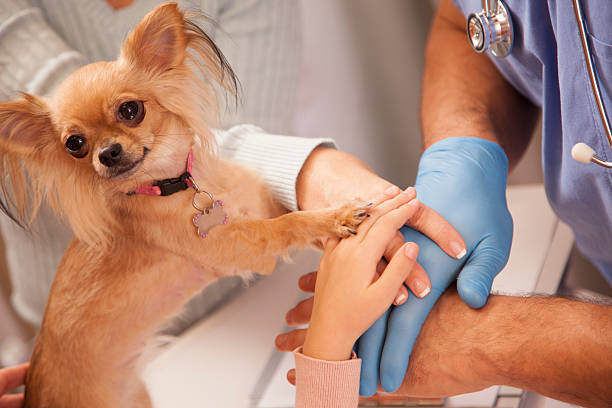The pet-care industry, with its unique blend of compassion, expertise, and business acumen, requires strong leadership to thrive. Whether you run a grooming salon, dog bar, boarding facility, or daycare center, effective leadership is crucial to ensuring your team is motivated, your operations run smoothly, and your clients—both human and animal—are satisfied. This blog post explores key principles and practices of effective leadership in the pet-care industry and offers practical tips for guiding your team to success.
The Importance of Effective Leadership

1. Motivating Your Team:
- Inspiration and Morale: A strong leader inspires their team, boosting morale and encouraging a positive, productive work environment.
- Employee Retention: Good leadership reduces turnover by creating a supportive atmosphere where employees feel valued and understood.
2. Enhancing Customer Satisfaction:
- Consistent Quality: Effective leadership ensures that high standards of care and service are consistently maintained, leading to satisfied clients and loyal customers.
- Proactive Problem-Solving: Leaders who are proactive in addressing issues and improving processes enhance the overall customer experience.
3. Driving Business Success:
- Operational Efficiency: Strong leaders streamline operations, manage resources effectively, and make informed decisions that drive growth and profitability.
- Innovation and Adaptability: Leadership fosters a culture of innovation, enabling the business to adapt to industry changes and stay competitive.
Key Principles of Effective Leadership in Pet Care

1. Lead by Example:
- Demonstrate Excellence: Model the behavior, work ethic, and values you expect from your team. Your actions set the standard for your employees.
- Show Compassion: Display empathy and compassion in your interactions with both staff and clients. This creates a caring and supportive environment.
2. Communicate Effectively:
- Clear Instructions: Provide clear, concise instructions and ensure that everyone understands their roles and responsibilities.
- Open Dialogue: Foster an environment of open communication where team members feel comfortable sharing ideas, concerns, and feedback.
3. Empower Your Team:
- Delegate Responsibilities: Trust your team with responsibilities and give them the autonomy to make decisions. This empowers employees and encourages growth.
- Encourage Development: Invest in your team's professional development through training programs, workshops, and opportunities for advancement.
4. Foster Collaboration:
- Team Building: Organize team-building activities that promote collaboration and strengthen relationships among team members.
- Inclusive Decision-Making: Involve your team in decision-making processes, valuing their input and perspectives.
5. Recognize and Reward:
- Acknowledge Achievements: Regularly recognize and celebrate individual and team achievements. This boosts morale and motivation.
- Provide Incentives: Offer incentives, such as bonuses or additional time off, to reward hard work and dedication.
Practical Tips for Effective Leadership

1. Set Clear Goals and Expectations:
- Define Objectives: Clearly define your business goals and the expectations for each team member's role in achieving them.
- Regular Reviews: Conduct regular performance reviews to provide feedback, set new goals, and address any challenges.
2. Stay Organized and Efficient:
- Use Technology: Implement management software to streamline scheduling, communication, and operations. Tools like Revelation Pets can help manage appointments, customer records, and inventory efficiently.
- Prioritize Tasks: Develop a system for prioritizing tasks and managing your time effectively, ensuring that critical issues are addressed promptly.
3. Adapt to Change:
- Be Flexible: The pet-care industry is constantly evolving. Stay informed about industry trends and be willing to adapt your strategies and practices accordingly.
- Encourage Innovation: Create an environment where new ideas are welcomed and innovation is encouraged.
4. Maintain a Positive Work Environment:
- Support Work-Life Balance: Promote a healthy work-life balance by offering flexible scheduling and encouraging employees to take regular breaks.
- Address Conflict Promptly: Resolve conflicts quickly and fairly, maintaining a harmonious workplace.
Case Study: Effective Leadership in Action

Background: A thriving pet grooming salon recognized the need for strong leadership to manage its growing team and client base.
Strategies Implemented:
- Lead by Example: The owner demonstrated a strong work ethic and compassionate approach, setting a positive tone for the team.
- Open Communication: Regular team meetings and an open-door policy ensured that staff felt heard and valued.
- Professional Development: The salon invested in ongoing training for groomers, enhancing their skills and confidence.
- Recognition Programs: Employee achievements were regularly celebrated, boosting morale and motivation.
Outcome: The salon experienced improved employee satisfaction and retention, higher customer satisfaction, and increased business growth. The supportive and collaborative team culture led to a more enjoyable work environment and exceptional service quality.
Effective leadership is the cornerstone of success in the pet-care industry. By leading by example, communicating effectively, empowering your team, fostering collaboration, and recognizing achievements, you can build a strong, motivated, and cohesive team. These leadership principles and practices not only enhance employee satisfaction and customer experience but also drive the overall success and growth of your pet-care business. Invest in your leadership skills and watch your team—and your business—thrive.
Subscribe to the Gingr Blog






